- Home
- History of Sicily
- Allied Invasion of Sicily
the allied invasion of sicily - the turning point of world war ii
The Allied invasion of Sicily, also known as Operation Husky, was a major World War II campaign. At the end of it, the Allies had taken the island of Sicily from the Axis powers (Fascist Italy and Nazi Germany).
The fighting began on the night of 9-10 July 1943 as a large amphibious airborne operation, followed by six weeks of land combat.
The Allied invasion of Sicily launched the Italian Campaign. It paved the way for the downfall of Benito Mussolini - which, in turn, was essential to the victory of the whole war.
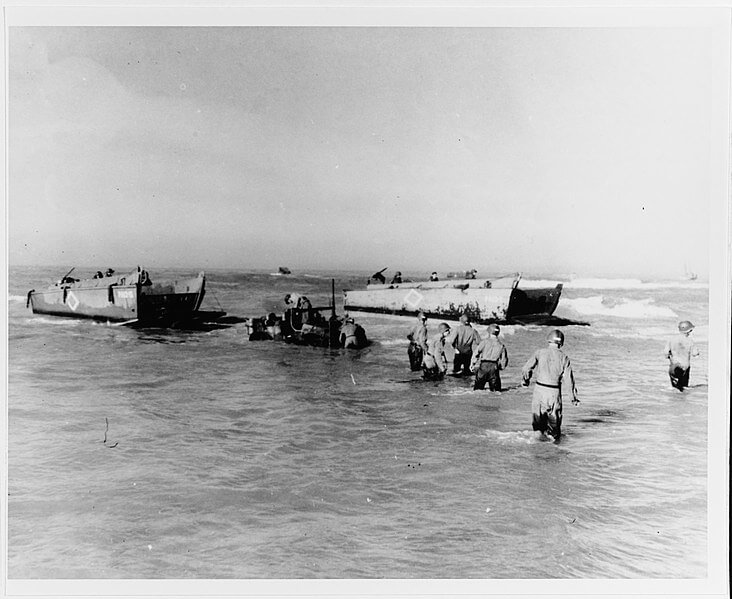 Allied troops landing in Gela, July '43.
Allied troops landing in Gela, July '43.Backdrop to the Allied Invasion of Sicily
In early 1943, the Allies were frantically trying to figure out how to attack behind the Axis lines. Eventually, they turned their attention to Sicily, the Axis Mediterranean stronghold.
The invasion of Sicily would represent a tactical victory but also a symbolic blow to the fascists. To succeed, it required careful planning. There were many strategic, logistical, and tactical points to consider.
Planning was even more challenging because the Allied forces included soldiers from many countries. Most of them were from the U.S., Britain, and Canada.
The Allied chiefs chose the southern coast of Sicily as their landing site.
A strict chain of command was needed for the attack to succeed. General Dwight D. Eisenhower was appointed the supreme commander of the operation. British General Bernard Montgomery was put in charge of the ground forces.
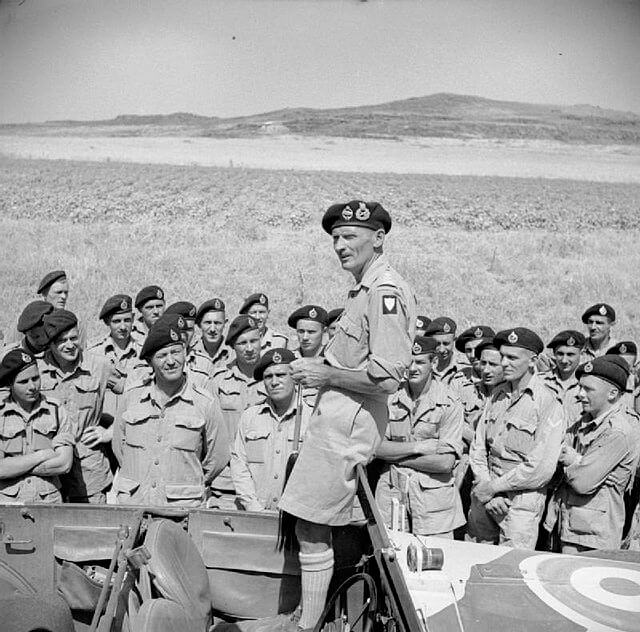 British general Montgomery giving instructions to the Canadian tank regiment.
British general Montgomery giving instructions to the Canadian tank regiment.To distract Hitler, the Allied devised a cunning plan. A submarine crew dropped a hobo - who had died of rat poison - onto the Spanish coast. The man was dressed in a British pilot's uniform. In the pocket was placed a top-secret plan for the Allied invasion of Europe.
The paper claimed that the plans were being made to invade Europe through Sardinia and Greece. Excited by this 'secret information,' the Axis powers concentrated their defenses there and gave less attention to Sicily.
The Allied invasion of Sicily started on 9. July, 1943. Over the next six weeks, 160,000 Allied troops swept across the island.
It wasn't an easy win, though. German and Italian troops were well prepared to defend the island. Countless lives were lost. As the towns were turned into battlefields, civilian casualties were inevitable.
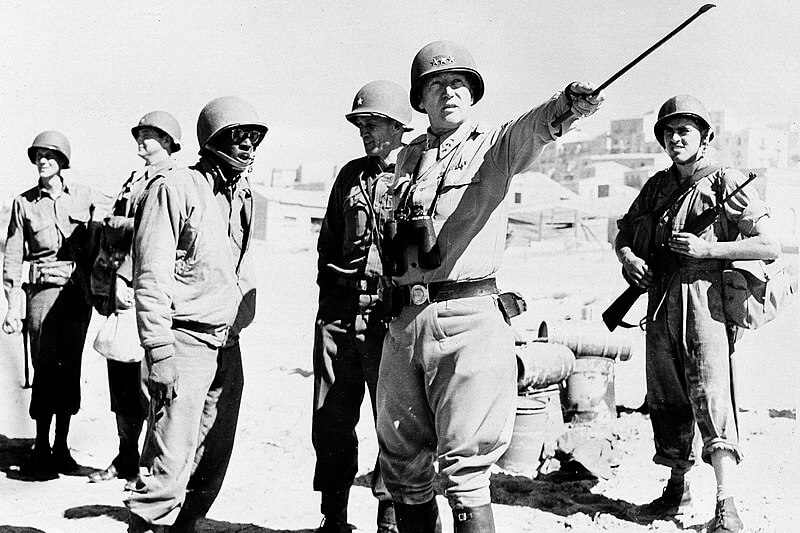 General Patton giving instructions to his troops. Patton played an important role in the invasion of Sicily. He fought in the front line himself and inspired his troops with his charismatic personality.
General Patton giving instructions to his troops. Patton played an important role in the invasion of Sicily. He fought in the front line himself and inspired his troops with his charismatic personality.Axis Defence
The German-Italian troops of the Axis powers defended the island vigorously. The defense was entrusted to German Field Marshal Albert Kesselring. He created a coordinated strategy that made the most of the resources available.
Sicily's hilly terrain, with carefully placed defensive structures, helped a great deal. They slowed the Allied advance and forced them to seek alternative routes.
The Axis powers also managed to mount effective counterattacks, thus disrupting the Allied advance.
Strong resistance was also seen in the cities. Syracuse, Catania, and Messina were the scenes of devastating urban warfare. This, of course, meant great suffering for the civilian population, as well as a challenge for the attacking troops.
The Axis powers received considerable air support, although it was limited compared to the Allied presence in the skies. In retreat, Axis troops destroyed infrastructure such as bridges to impede the invaders' advance.
As the battle turned into an Allied victory, the Axis troops retreated, trying to save their men for the fighting in mainland Italy.
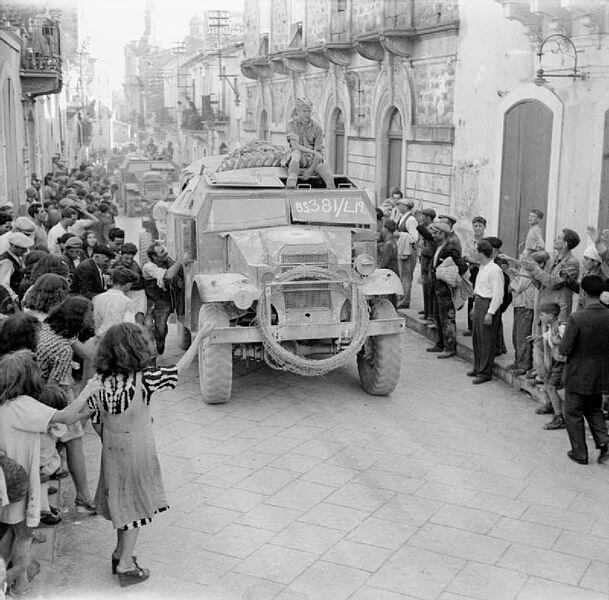 British troops arriving at Militello.
British troops arriving at Militello.The Change in the Balance of Power
By August 17, 1943, the Allies had driven the enemy forces out of Sicily. The capture of the island marked a change in the focus of the war. Sicily was the first domino to fall, after which a chain reaction was triggered.
After conquering Sicily, the Allies gained a significant advantage in air combat. The Allies could now operate freely over the Mediterranean and Europe.
They could attack supply lines, passages, and ports of the Axis powers from the air, which made it much more difficult for the Axis powers to operate in Italy.
After conquering Sicily, the Allies launched Operation Avalanche in September 1943. This meant invading mainland Italy, which further improved the location of Allied bases closer to Axis-controlled Europe.
Still, the battle was not a victory-to-victory affair. Although outnumbered, the Axis powers took advantage of uneven terrain. However, constant aerial bombardment severely dented the morale of the people, which eventually led to Italy's surrender.
From Italy, the Allies were now able to strike elsewhere in Europe. The direction of the war had been reversed. From now on, Hitler was forced to take a defensive position.
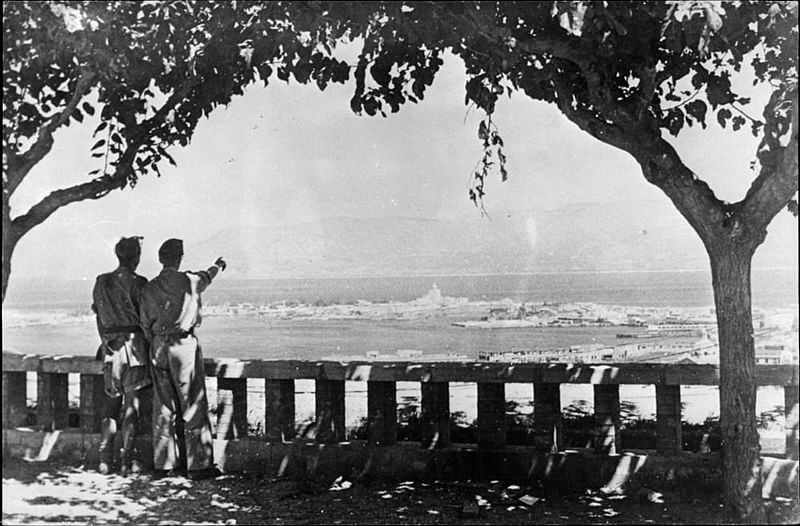 Allied soldiers looking over the Strait of Messina at the end of Operation Husky. Mainland Italy was their next target.
Allied soldiers looking over the Strait of Messina at the end of Operation Husky. Mainland Italy was their next target.Sicily Today
Despite its challenging history, Sicily today is a vibrant, culturally rich region of Italy. History is everywhere, and in many parts of the island, you can still find signs of the impact of the invasion.
With its blend of history, architecture, and Southern Italian charm, Sicily carries an appealing promise to history buffs and travel enthusiasts. And, of course, anyone interested in understanding World War II.
For the latter, I'd suggest a visit to the Landing Museum in Catania. It chronicles meticulously the Allied invasion of Sicily. Not only does it offer a wealth of historical information, but the museum creates a time capsule of pictures, artifacts, and personal testimonies.
Ultimately, the story of the Allied invasion of Sicily reminds us of our shared history – a kaleidoscope of victory, freedom, and tragedy. It encourages us to appreciate the heroic acts of those who fought. It also gives us the broader trajectory of history and its intersection with places like Sicily.
In understanding the undertones of that era, we gain a greater insight into the integral themes of human struggle, principles, and resilience - lessons still applicable today.
 Two Sicilian boys with a donkey look on as British soldiers skim through books.
Two Sicilian boys with a donkey look on as British soldiers skim through books.Conclusion
The Allied invasion of Sicily played a critical role in the effort to liberate Europe from Nazi occupation. It was both a strategic as well as a psychological win.
Until 1943, the main anti-Nazi front had been in Eastern Europe. The capture of Sicily opened up a new front and forced German forces to spread their attention in many directions.
The invasion of Sicily also forced Fascist Italy to turn its course. After that, they realized that the balance of war had turned against them.
Italy signed an armistice agreement with the Allies in September 1943, weakening the Axis powers supporting Hitler.
The invasion of Sicily was a critical step forward in the Allied advance towards victory in the Second World War.
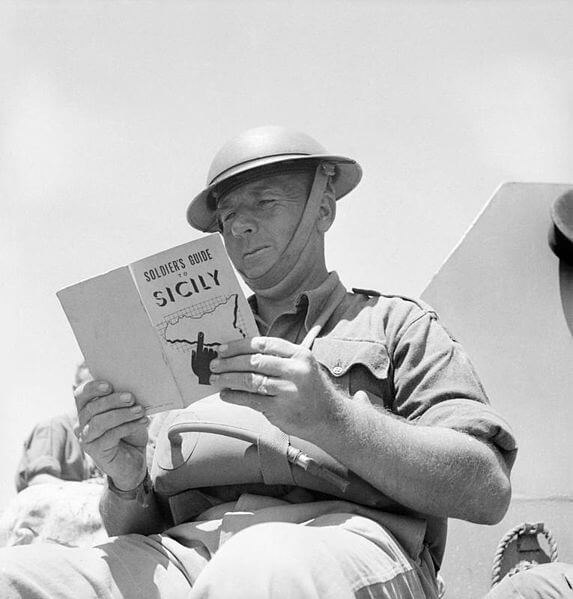
(Edited: December 3, 2024)
Recent Articles
-
Honeymoon in Sicily: Where Landscapes Stir the Heart
Dec 17, 25 12:21 PM
Honeymoon in Sicily: Timeless temples, coastal hideaways, slow meals, and landscapes that invite closeness. -
Best Time to Visit Sicily: Your Seasonal Guide
Dec 05, 25 04:23 AM
Find the best time to visit Sicily. Explore seasonal weather, crowds, prices, and highlights. -
Where to Stay in Sicily: Top Areas for Every Traveler
Nov 27, 25 08:14 AM
Where to stay in Sicily: A guide to the island’s best regions, helping you choose the perfect base for your trip.
Follow MANY FACES OF SICILY on Facebook, Instagram, Bluesky & Tumblr
Contact: vesa@manyfacesofsicily.com







